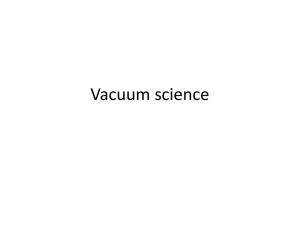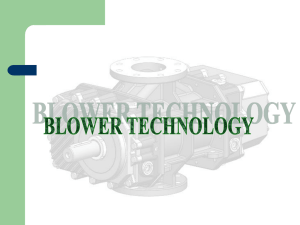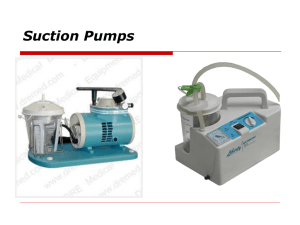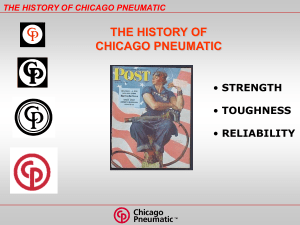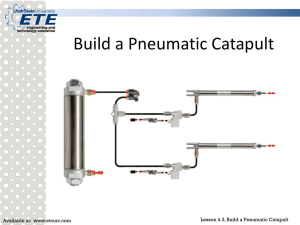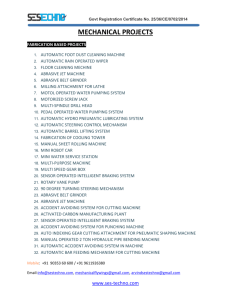24- Aircraft Pneumatic Systems
advertisement
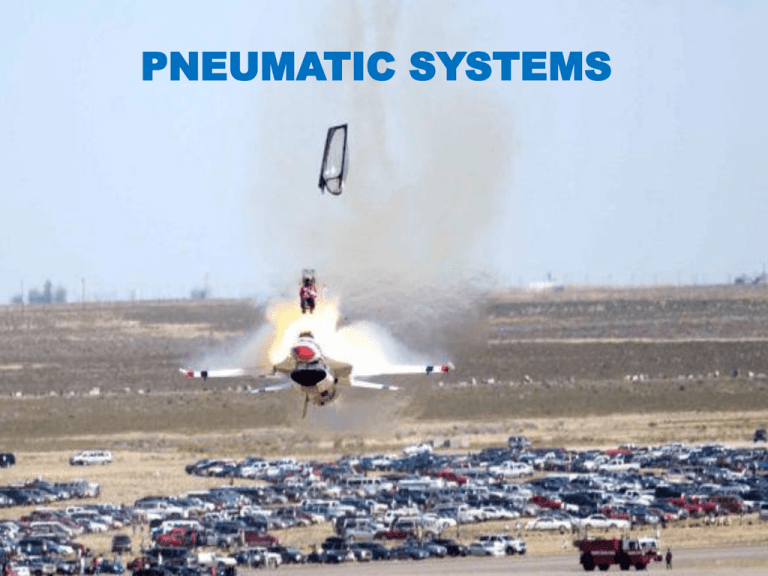
PNEUMATIC SYSTEMS The learning objective of this presentation, To develop the student's knowledge of the vacuum system to meet the basic functions in vacuum system that supply essential instruments of the aircraft and ability to detect abnormal or unsafe operation and responding to a vacuum system failure • • • • • • • • • • • • Aircraft Pneumatic System Intro Vacuum Systems Pneumatic Use in Small Aircraft Pneumatic System Components Air Pumps Pneumatic System Operation Actions before every flight Failure Causes Early Recognition Emergency Procedures Spatial Disorientation Redundancy Options Sometimes called vacuum pressure systems Aircraft Pneumatic Systems power Instruments, *landing gear, *flaps, air conditioning, windows, doors and more In light Aircraft, Suction Pressure Gauge shows Vacuum System Pressure • Pumps • Relief Valves • Vacuum Air Filter • Suction Gauge Gyro instruments: - Attitude Indicator - Heading Indicator • Gyro compass • Artificial Horizon • Turn coordinator •Air Pump •Vacuum Regulator •Inlet Air Filter •Overboard Vent Line •Gauges: – Attitude Indicator – Heading Indicator •System Indicators – Suction Gauge – Gyro Flag – Annunciator Lights Pneumatic Air Filter - Prevents system contamination - Remove air particulates - Clean air is essential to good operation Pneumatic Pressure Regulator - Prevents System over pressurization - Insures proper calibration Heart of pneumatic system is pressure or vacuum air pump (Usually engine driven) • Two basic types : • Wet air pumps use engine oil to lubricate pump internally • Dry air pumps - more common –have graphite vanes inside pump casing - self-lubricate as pump rotates •Filtered Air is pulled through system by vacuum pump •Evacuated air passes through instrument case causes gyro to spin •Spinning gyros provide “rigidity in space” for instrument references •Air exhausts through Gyro Pressure Gauge exhaust port – Gauge measures system pressure •Failure Warning Systems Check for oil leaks Check the hose And clamps for Oil leaks Check for loose fittings that allow contaminants into the system Check for external damage • System Contamination - Solid particles in pneumatic system damage pump and plug valve openings – Liquids from oil, water, or engine cleaning solvents • Restriction/ leaks within the system -A loose fitting or damaged hoses -Worn out, misused, or incorrectly routed hoses • Sudden changes in engine speed - Abrupt engine deceleration - Sudden engine stoppage • Pneumatic System health can be determined by the indications on either the vacuum gauge or flags on the attitude indicator Inaccurate/conflicting Instrument information Suction/pressure gauge indicates outside normal operating (green) range Spotting pneumatic system failure early reduces chances of spatial disorientation 95% are Fatal 1995-2004 Accidents cause by vacuum Failure 5% non Fatal 1st Qtr 2nd Qtr While pneumatic system failures alone do not cause accidents, spatial disorientation does, and tragically these accidents are almost always fatal • Activate a back up power supply for pneumatics ( aux Vacuum pump if have) • Maintain partial panel instrument flying - Cover up or simulate loss of flight instruments • Make timed turns • Notify ATC • In IMC –seek and fly VMC When your instruments disagree, confusion, dizziness, and uncertainly can cause loss of control. Spatial disorientation occurs quickly when outside visual reference is poor such as night, IMC , Haze Electrical Power Instruments Secondary Air pump ( Electric Aux Vacuum Pump) Pressure differential Switch Pneumatic Systems fail at unexpected times The danger , in the event of pneumatic system failure is spatial disorientation Have a good knowledge what power systems on the aircraft you fly Practice on the partial panel Flying and be familiar with aircraft instruments Whether you rent, own, or operate become familiar with the maintenance history of the Aircraft
